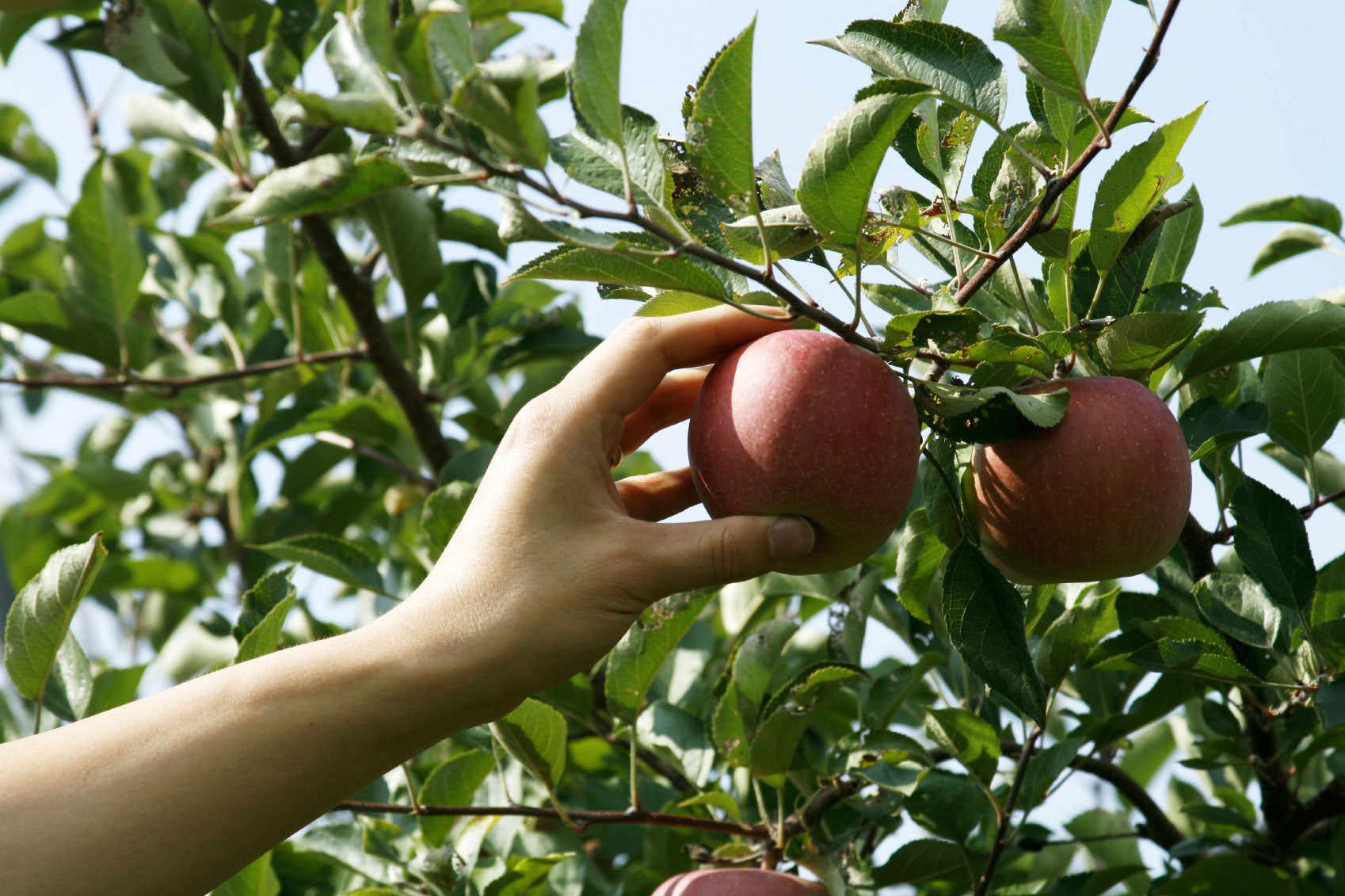
The old adage “an apple a day, keeps the doctor away” may not be completely true, but apples are certainly nutritious and are arguably one of America's favorite fruit. So how do you know when to pick apples and exactly how do you harvest apples and then store them properly?
When to Pick Apples
Harvesting apples at just the right time is key, not only to obtaining the highest quality fruit but also to maximize the storage life. Each variety of apple has its own maturation time and can be dependent upon weather conditions during the growing season. For example, apples will ripen earlier if there is a mild, sunny spring which kick starts the tree's fruiting cycle early. Because of this, you should gauge harvest time through other indicators rather than a specific date on the calendar. That said, early maturing apples called "summer apples" such as Honeycrisp, Paula Red, and Jonagold reach their peak in August and early September. First of all, mature apples are firm, crisp, and juicy with good color and a developed flavor characteristic of the variety. In red varieties, the color is not a good indicator of maturity. Red Delicious, for example, will turn red well before the fruit is ripe. Seed color is also not a reliable indicator. Most apple varieties have brown seeds when mature, but the seeds may also brown weeks before it is really time to harvest. Premature apple picking may lead to fruit that is sour, starchy, and generally unpalatable, while harvesting apples too late results in a soft and mushy fruit. However, if you have a sudden freeze and have not yet picked the apples, as they didn't seem ready, you may still be able to do so. Apples freeze at 27-28 degrees F. (-2 C) depending upon the sugar content. Apples high in sugar and ripe fruit freeze at a lower temp. Once the freeze breaks, allow the apples to thaw on the tree. Unless the temperature dipped below 22-23 degrees F. (-5 C) or lasted an extended period of time, it is quite likely the apples will survive for harvesting. Once the apples thaw, inspect them for damage. If they are not browning or softening, harvest immediately. Apples that have been frozen have a shorter shelf life than their counterparts, so use them as soon as possible.
How to Harvest Apples
If you're planning on storing the apples, they should be picked when mature, yet hard, with a mature skin color but a hard flesh. Gently remove the apples from the tree, keeping the stem intact. Sort through the apple harvest and remove any apples that have insect erosion or signs of disease. Separate the apples by size and use the largest apples first, as they do not store as well as smaller ones. Apples that show signs of damage can be used immediately after cutting off the spoiled bit, either eaten fresh or cooked down.
Post Harvest Apple Storing
Apples should be stored between 30-32 degrees F. (-1 to 0 C), especially if you want to store them for an extended period of time. Apples stored at 50 degrees F. (10 C.) will ripen four times as fast as those at 32 degrees F. (0 C.). Most cultivars will store for six months at this temperature. Store the apples in baskets or boxes lined with foil or plastic to aid in moisture retention. It's very important to sort the apples prior to storage. The saying “one bad apple spoils the barrel” is true. Apples emit ethylene gas, which hastens ripening. Damaged apples give off ethylene more quickly and can literally cause a batch to spoil. You may also want to keep some distance between stored apples and other produce, as the ethylene gas will accelerate the ripening of other fruits and vegetables. If apples are stored in plastic bags, be sure to poke some holes in them so the gas can filter out. Relative humidity is also an important factor in the storage of apples and should be between 90-95 percent. A cellar, basement, or unheated garage are all some storage area options. Too many apples to store? Can't give them away? Try drying, freezing, or canning them. Also, the local food bank will likely be happy to have a donation of sweet, crisp apples.
Sign up for the Gardening Know How newsletter today and receive a free copy of our e-book "How to Grow Delicious Tomatoes".

Amy Grant has been gardening for 30 years and writing for 15. A professional chef and caterer, Amy's area of expertise is culinary gardening.
